Moist, fluffy, and stuffed with a mixture of napa cabbage, bamboo shoots, and mushrooms, these vegetable bao buns are restaurant quality! Served as a breakfast food in China, bao buns also make a delicious snack and can be paired with a soup for a light and tasty meal.
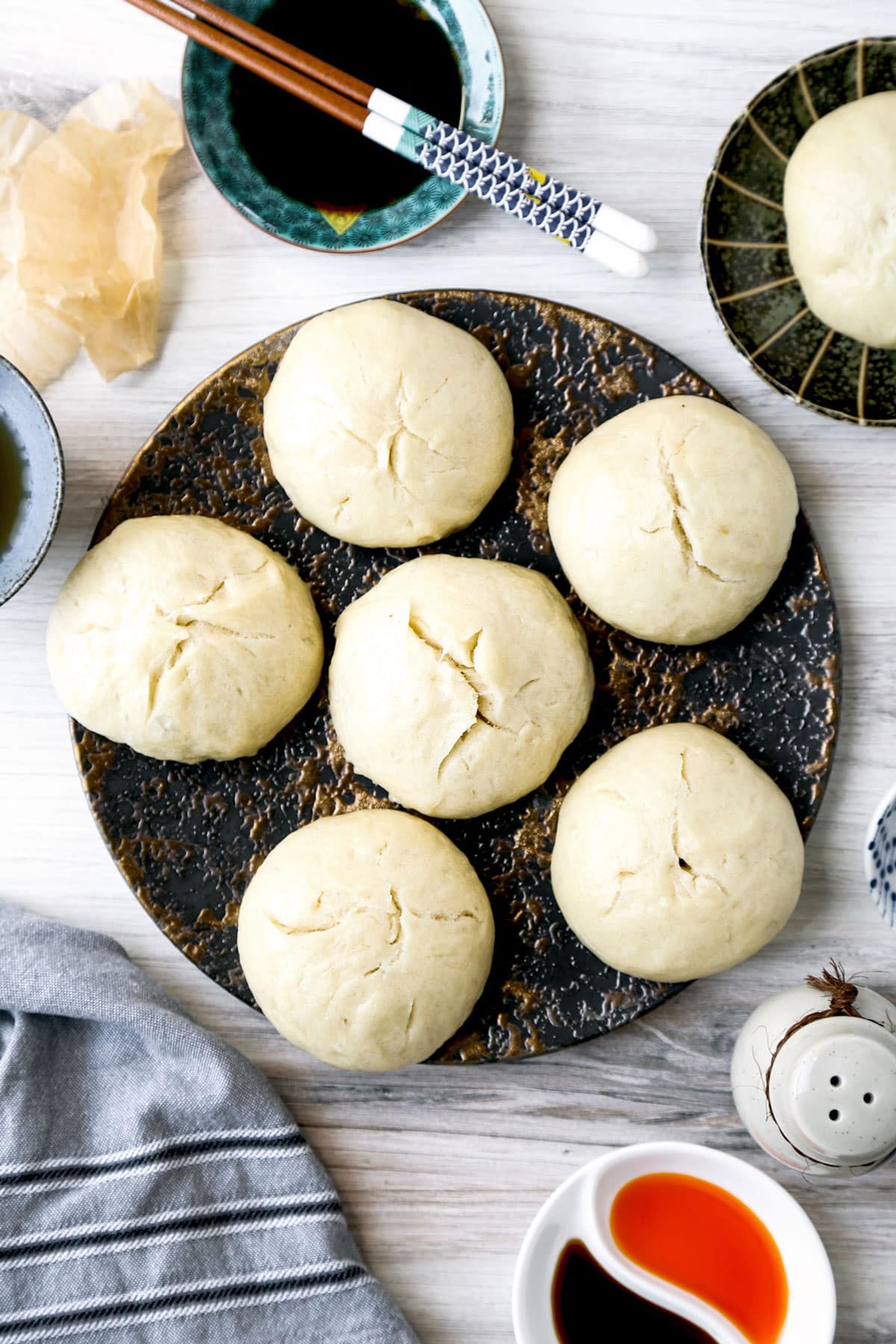
“I just made bao buns!” I yelled, alone in the kitchen, as I peeked inside the steamer basket to see if the dough had risen.
I was happy because I don’t consider myself particularly talented at making dim sum, or anything involving turning dough into fluffy bread. So when I saw how pretty the buns looked – shiny and puffy – I couldn’t contain my excitement.
Dipping my own homemade bao bun in a mixture of chinkiang vinegar, soy sauce, and chili oil, felt seriously satisfying. And as you will see, though there are quite a few steps to making vegetable baozi, nothing is complicated, which means that you don’t have to be a pro to make these tasty bao buns.
What Are Bao Buns?
Bao buns, or baozi (包子), are Chinese buns stuffed with a vegetarian or meat filling. They are a variation of mantou which is a type of steamed bread that hails from Northern China.
There are two popular types of bao buns: Dàbāo, which are large buns approximately 4 inches in diameter, and Xiǎobāo, or small buns, measuring about 2 inches wide. The most popular cooking technique for making bao buns is to steam them.
Bao buns (baozi) are sold in restaurants but can also be purchased as a takeout item. They are also sometimes sold in Asian bakeries and convenience stores such as Seven Eleven.
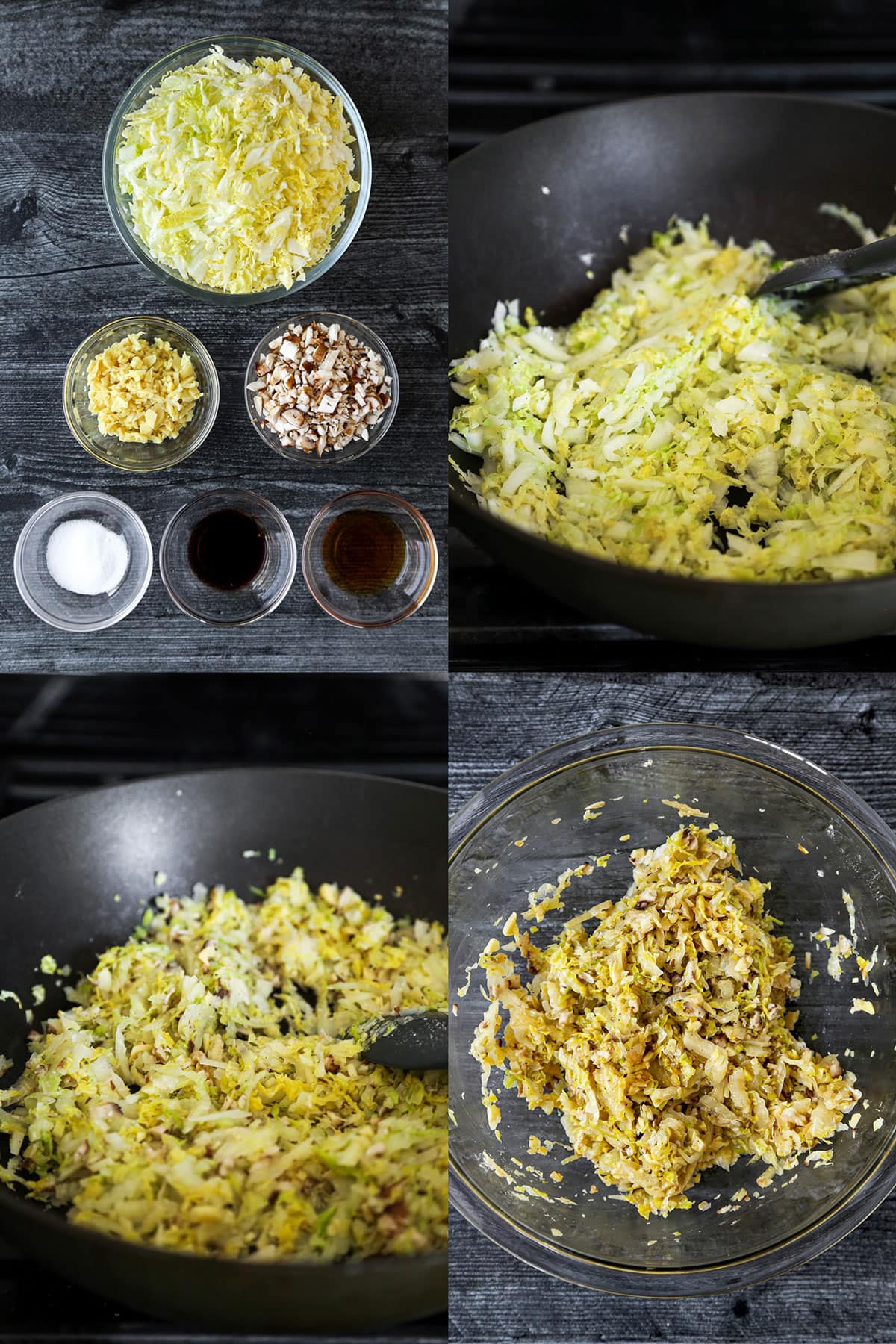
Ingredients for Bao Buns
Scroll all the way down for the full recipe.
- Vegetable filling: A mixture of napa cabbage, bamboo shoots, shiitake mushrooms, sesame oil, sugar, and soy sauce.
- Flour: All-purpose flour is what I’m using but you can also use whole wheat flour.
- Sugar: Depending on who makes the bao buns, the flavor will range between sweet-ish to not sweet at all. I personally like the taste to be somewhere in between which is why I’m using two tablespoons of sugar.
- Salt: Just a sprinkle to strike the right balance between sweet and savory.
- Active dry yeast: Adding a little hot water to the yeast before using it helps to activate it, which is why I have mixed mine with 1 1/2 teaspoon of boiling hot water.
- Baking powder: A little baking powder to help the dough leaven even more.
- Water: 1 cup to make the dough malleable and sticky.
- Oil: Adding a little oil to the mixture helps the buns retains their moisture. I recommend using a neutral oil such as vegetable or grapeseed.
- Cupcake liners: I like using cupcake liners because they help in keeping the shape of the buns while they steam. Alternatively, you can use parchment paper that’s been cut into discs that are a little wider than the size of the buns.
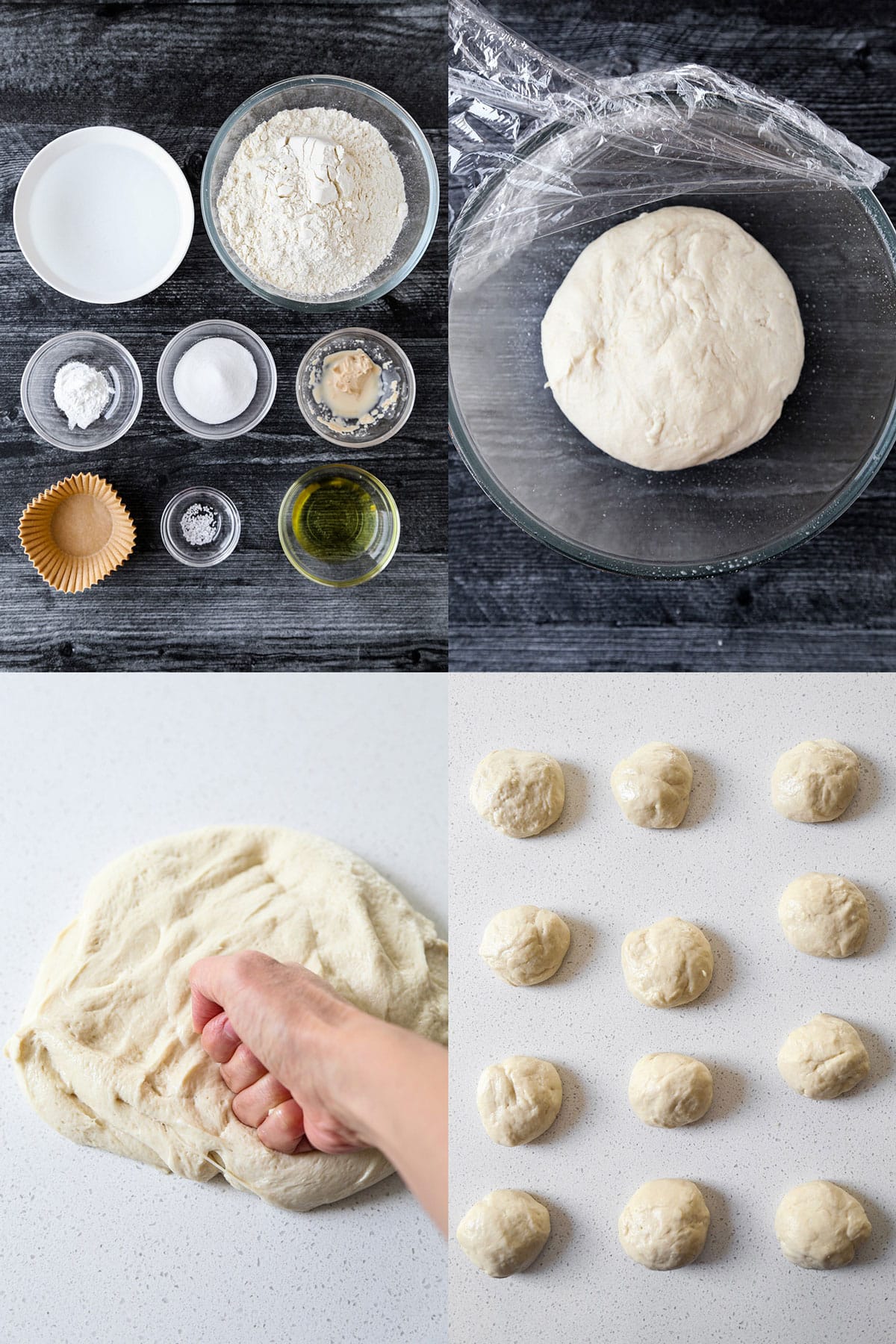
How to Make Vegetable Bao Buns
- Gather all of your cooking tools and ingredients.
- Let’s start by making the bao filling – Heat a medium size skillet over medium heat and add the cabbage with 1 tablespoon of oil. Cook for 5 minutes, until the cabbage has softened.
- Add the bamboo shoots and mushrooms to the skillet and cook for 3 minutes, until the cabbage and mushrooms are tender. Turn the heat off and transfer the mixture to a bowl. Add the sesame oil, sugar, and soy sauce, and season with a little salt and pepper. Mix well and set aside.
- For the bao buns, begin by sifting the flour into the bowl of a stand mixer. Add the sugar, salt, and baking powder, and stir to combine the ingredients.
- Add the active dry yeast, water and oil to the bowl and attach a dough hook to the mixer. Mix at medium low speed for 7 minutes.
- Meanwhile, spray or brush a bowl with a little oil.
- Scoop the dough and transfer it to the bowl. Lightly wet or oil your hands and shape the dough into a ball. Cover the bowl with plastic wrap and let the dough proof for 1 hour, preferably somewhere where the temperature is between 75ºF and 85ºF.
- Place the ball of dough on a flat surface and punch it a couple of times. Reshape it into a ball and place it back in the bowl. Cover and proof for an additional 15 minutes.
- Return the ball to a flat surface and knead it a few times to get rid of the air bubbles.
- Cut the dough into 12 equal pieces, about 1.85 ounces per piece (I use a food scale since it’s easier and more precise), and cover with a kitchen towel to prevent the dough from drying.
- Grab a piece of dough and flatten it to create a disc that’s around 4 to 5 inches in diameter. The center should be thicker than the edges so it can hold the filling.
- Scoop 2 heaping tablespoons of filling and place it in the center of the dough. Pleat and pinch the edges so they gather over the filling and eventually close up the top to create a little bun.
- Do this for the remaining 11 dough pieces.
- Set up your steamer and add the bao buns, leaving a little room between each of them. Cover and steam for 12-14 minutes. Turn off the heat and leave the buns in the steamer for 5 more minutes (otherwise they could deflate).
- Transfer the bao buns to a serving plate and serve as is or with your favorite dipping sauce.
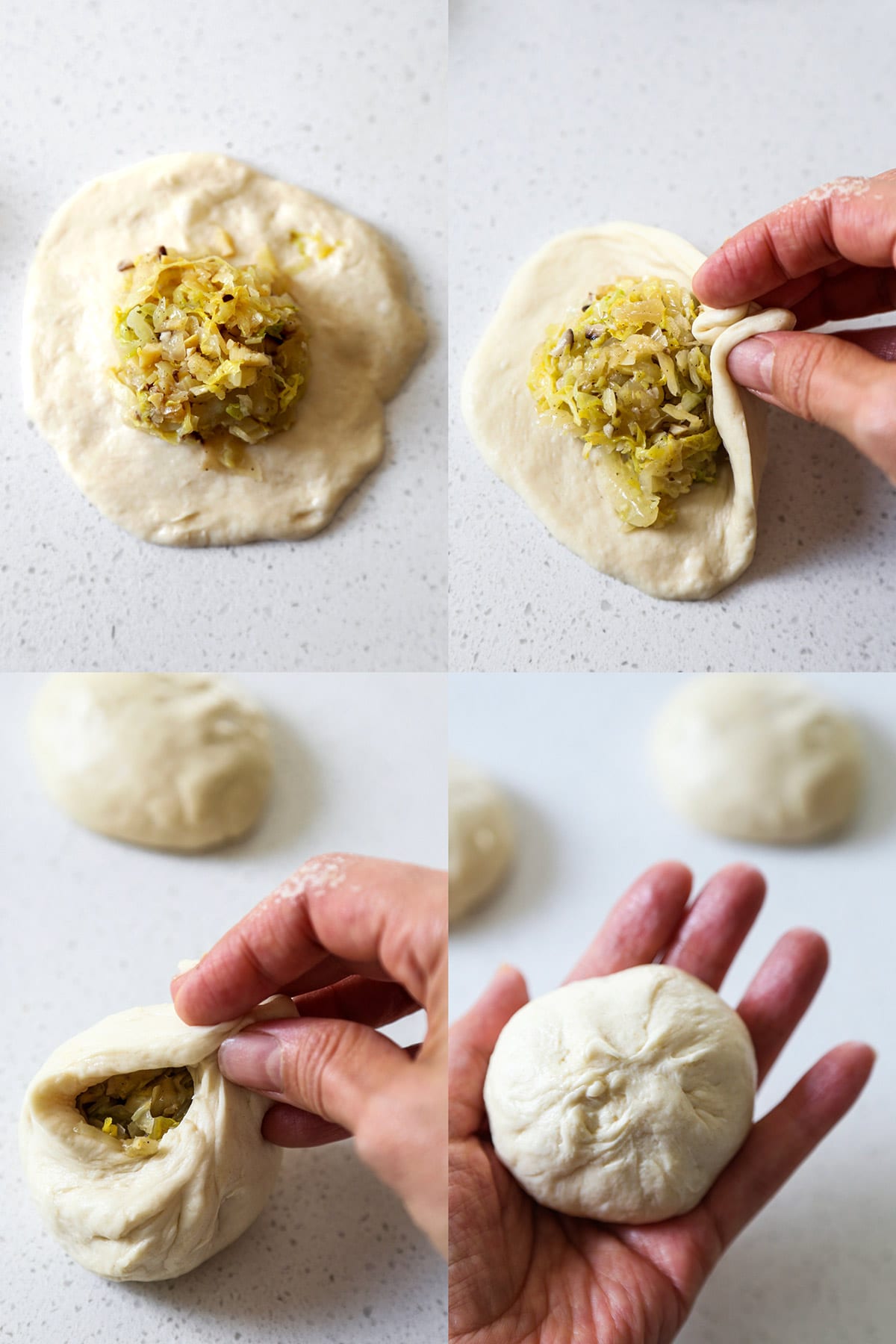
How to Steam Buns and Dumplings
Steaming buns and dumplings is very easy but can seem a little daunting if you have never done it before.
Here is a step-by-step rundown on how to steam dim sum successfully.
- Use a wok or deep skillet as the base where the water will be steaming.
- Add 2 to 3 inches of water and place a food steamer on top. I recommend using a bamboo steamer or stainless steel food steamer.
- Check that there is space between the steamer and water, so the food sits about 2 inches above water. You don’t want the water to touch the food at any point during the steaming process, so it’s best to have the food high enough that you don’t have to worry about bubbles or water splashing.
- Add your dumplings or buns – it’s the same concept for other foods, including vegetables – and cover with a lid.
- Bring the water to a boil and lower the heat to a bubbling simmer, so the water doesn’t evaporate too quickly.
- Steam until the food is cooked, according to the cooking of the recipe. Enjoy!
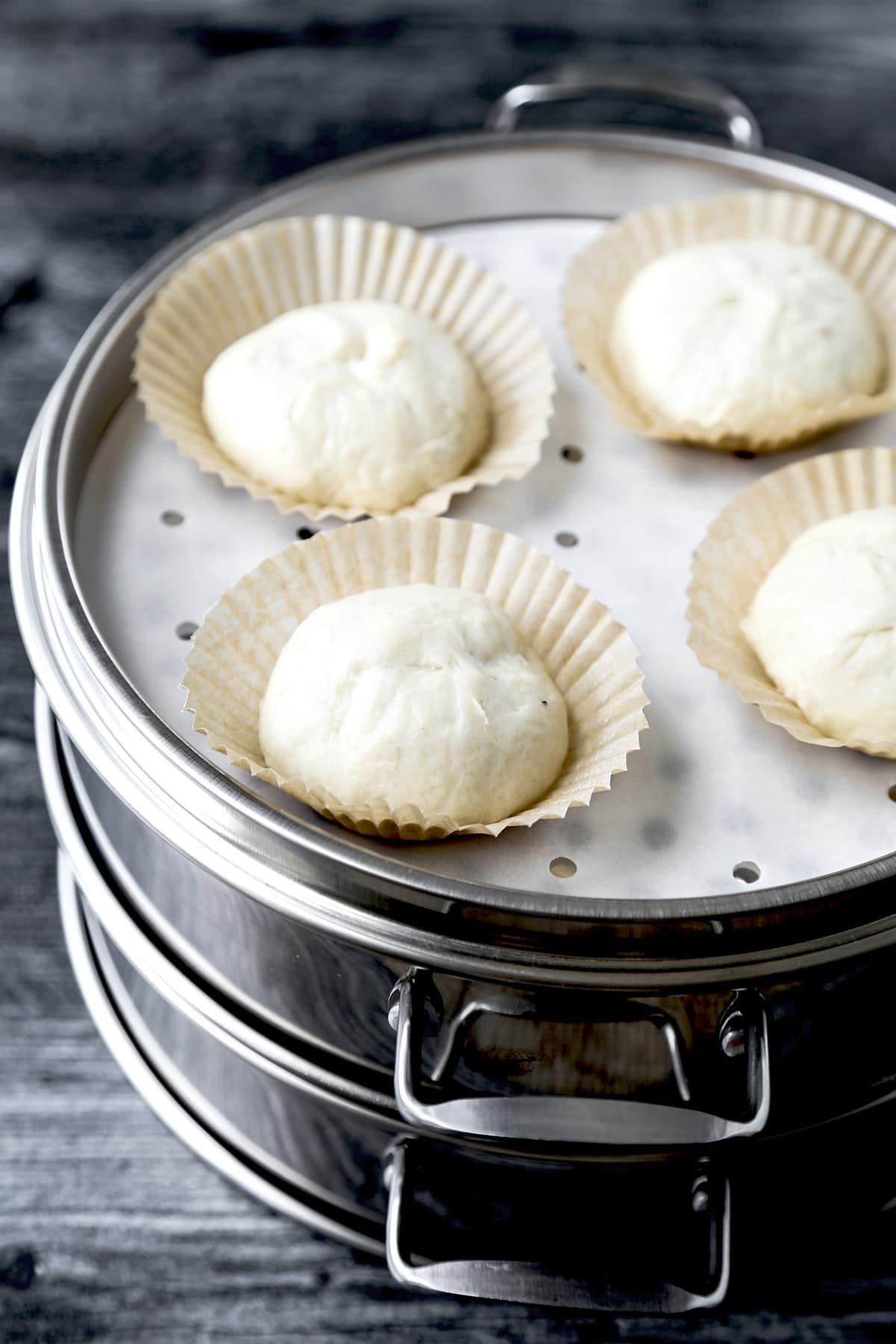
Best Food Steamer
If you steam as often as I do, I recommend getting a two or three tier food steamer because they can hold more food. Steaming food is great for those looking to use little to no oil in their cooking, and it helps retain a lot of nutrients when it comes to vegetables.
When we think about steaming dim sum, a bamboo steamer is the first thing that comes to mind. However, I personally prefer the stainless steel version because bamboo can mold or break easily. A stainless steel food steamer on the other hand is much sturdier, doesn’t mold, and is also easy to clean.
I have both and only use the bamboo steamer to shoot food because it looks prettier and more exotic. When it comes to buying a long lasting food steamer, go for a stainless steel one. I promise you won’t regret it!
The one I have and really love is the Anlisnut 10 inch Stainless Steel Steamer, 2 Tier Dimsum Steamer Basket with Lid, which comes with mini stainless steel chopsticks, and steamer liners.

Freezing Bao Buns
Freezing bao buns is very easy!
Keep the buns in the cupcake liners and put them in in an airtight storage bag, with the liners touching each other so the buns are back to back. This prevents the buns from touching each other and sticking together in the process. You can also separate them with a little parchment paper in between.
Seal the bag and freeze for up to 2 months.
When it’s time to reheat, grab a bun and sprinkle a little water on top. Cover and microwave for 40 to 50 seconds. Enjoy!
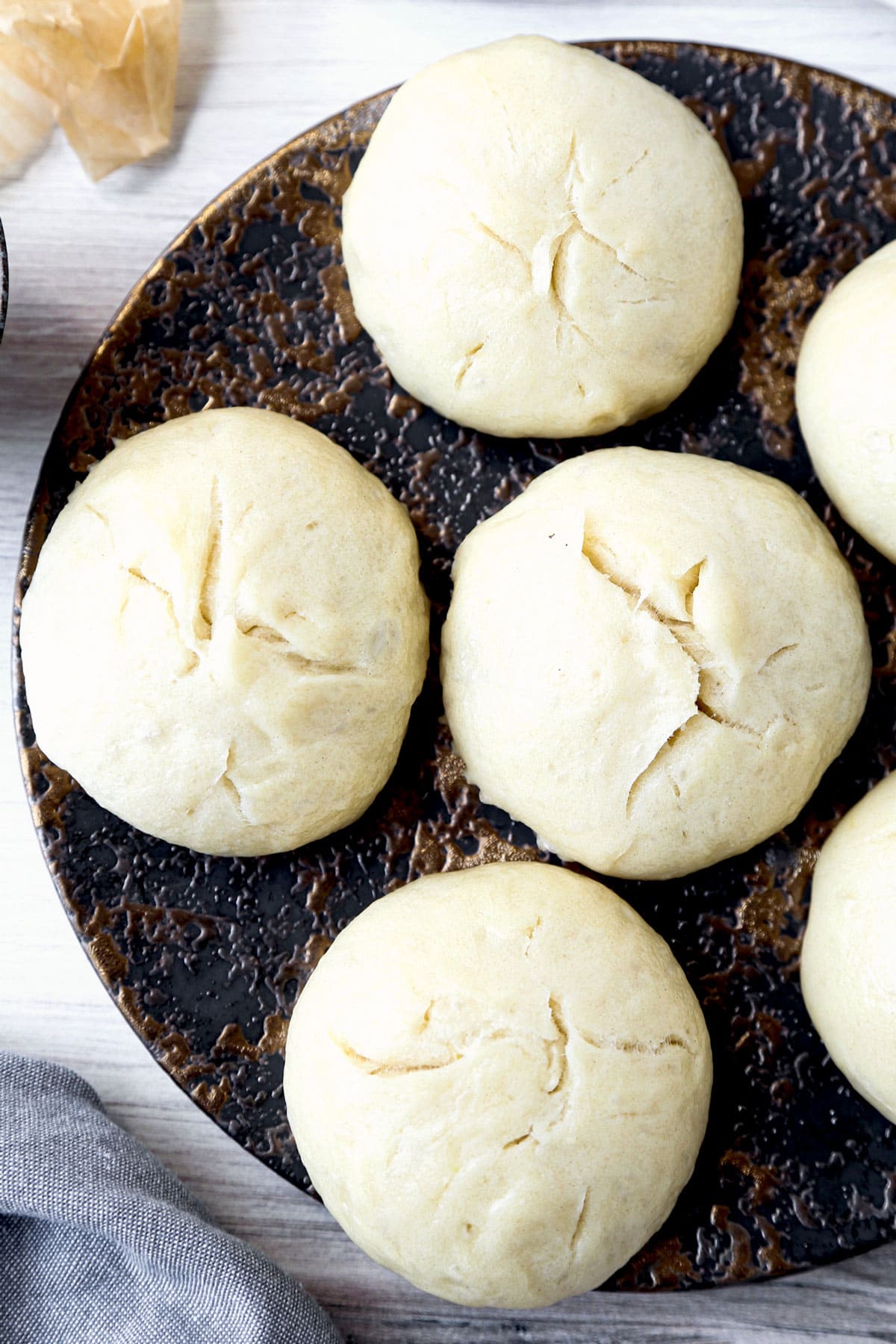
What to Serve with Vegetable Bao Buns
Baozi are wonderful as a breakfast food or a snack, but can also be served as a side dish with your favorite dipping sauce. Some of my favorite dishes to pair with bao buns are:
- Stir fried beans sprouts with tofu and garlic chives
- Easy homemade vegetable wonton soup
- Vegetable spring rolls
- Chinese broccoli with garlic sauce
- Chinese lotus root salad
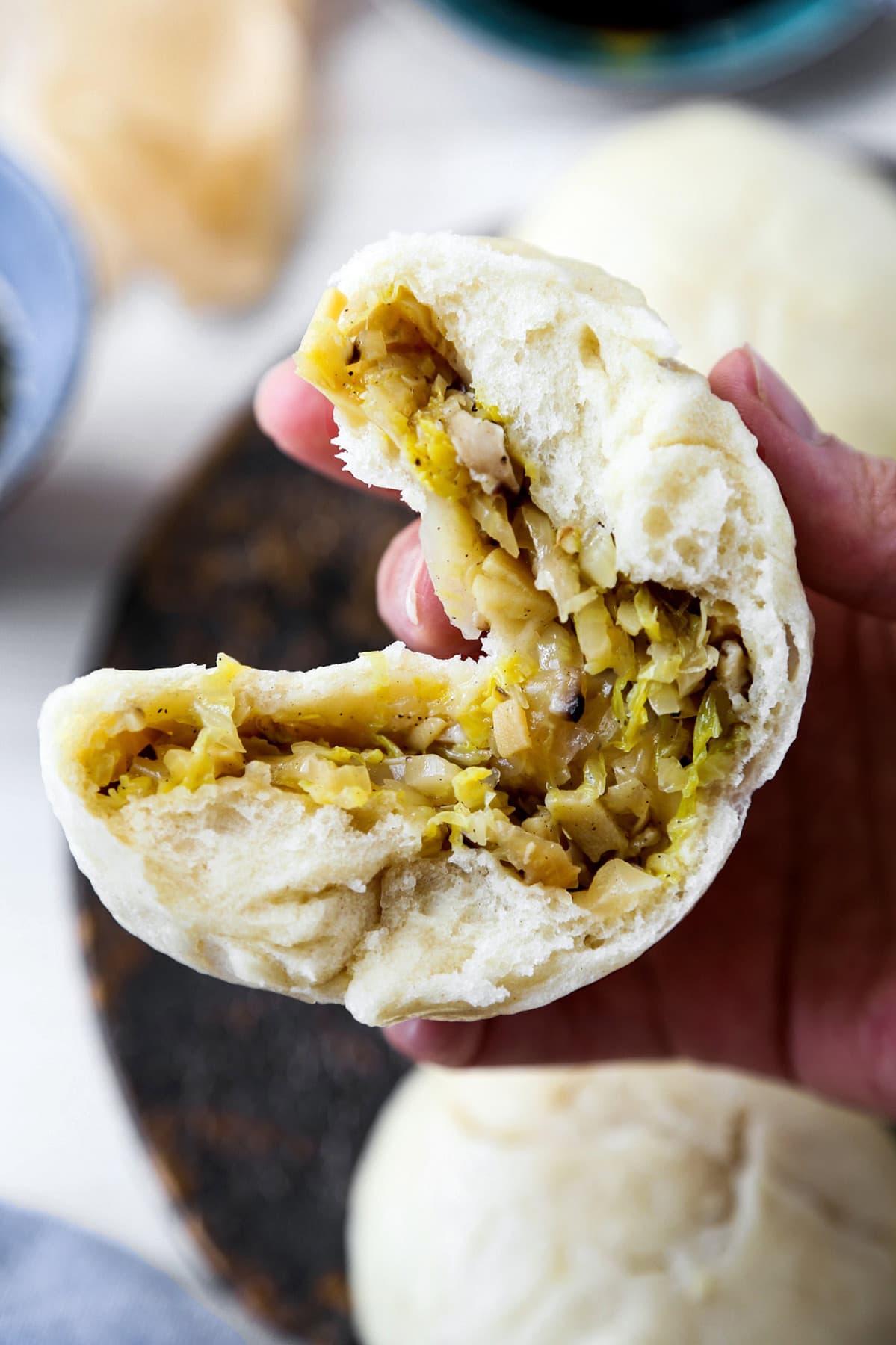
TABLEWARE
Like some of the tableware in this post? They are available at Musubi Kiln.
Musubi Kiln is an online store specializing in high quality handmade Japanese tableware and dinnerware. Each product is made by Japanese craftsmen using traditional techniques that have been passed down from generation to generation.
Receive 10% off your purchase when using the code CAROLINE at checkout.
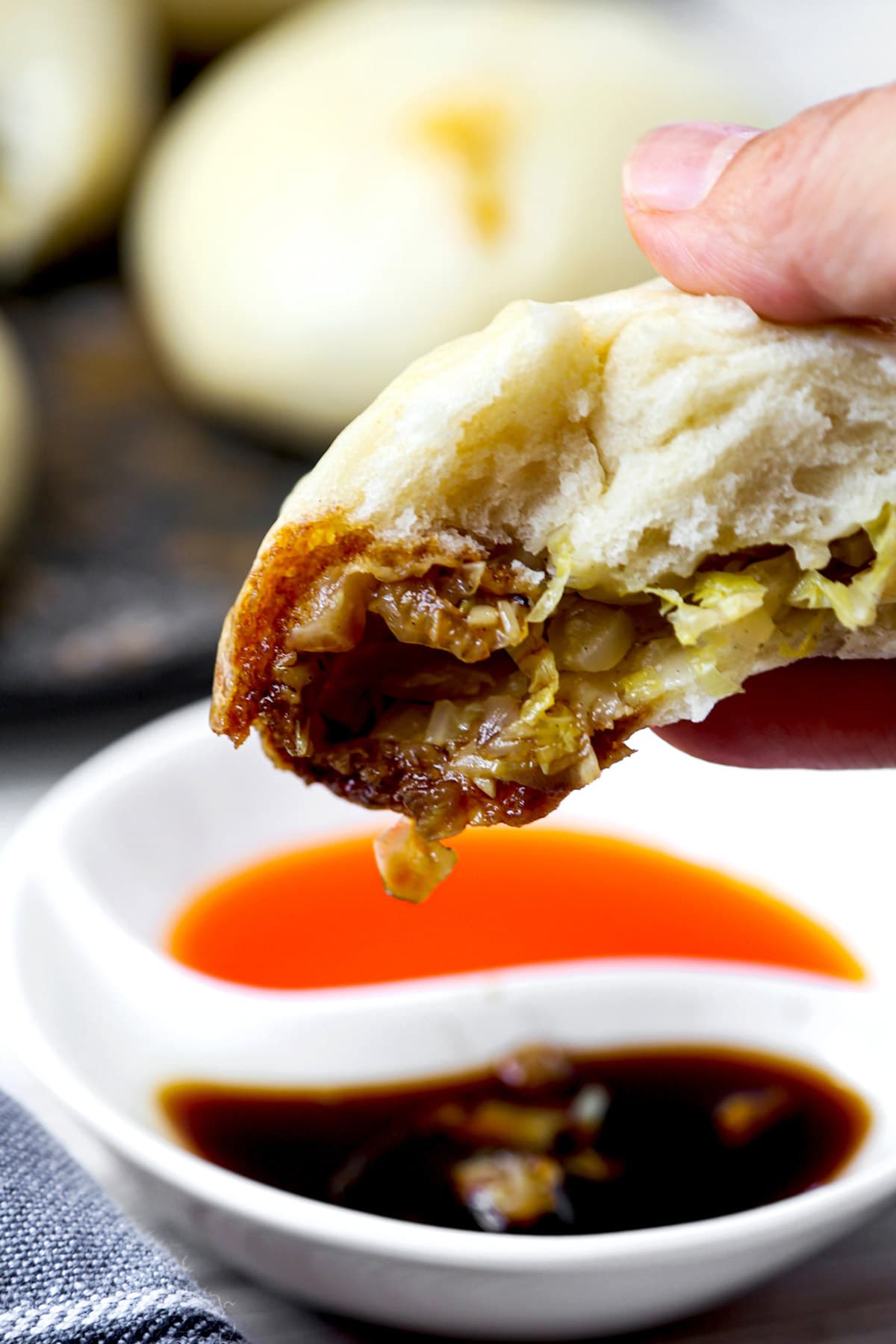
Did you like this recipe? Are there changes you made that you would like to share? Share your tips and recommendations in the comments section below!
Print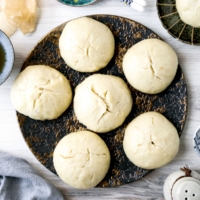
Vegetable Bao Buns
- Prep Time: 25 minutes + 82 minutes passive time
- Cook Time: 25 minutes
- Total Time: 2 hours 12 minutes
- Yield: 12 buns 1x
- Category: Appetizer
- Method: Steaming
- Cuisine: Chinese
- Diet: Vegetarian
Description
Moist, fluffy, and stuffed with a mixture of napa cabbage, bamboo shoots, and mushrooms, these vegetable bao buns are restaurant quality!
Ingredients
- 1 tablespoon neutral oil
- 1 pound napa cabbage, shredded
- 2 oz bamboo shoots, finely chopped
- 2 oz fresh shiitake mushrooms, finely chopped
- 1 tablespoon sesame oil
- 2 teaspoons soy sauce
- 1 teaspoon sugar
- 2 1/2 cups all-purpose flour
- 2 tablespoons sugar
- 1/8 teaspoon salt
- 1 teaspoon active dry yeast mixed with 1 1/2 teaspoon boiling hot water
- 1 teaspoon baking powder
- 1 cup water
- 1 tablespoon grapeseed oil or vegetable oil
- 12 cupcake liners
Instructions
To make the filling:
- Heat the neutral oil in a pan over medium heat, add the cabbage and cook for 5 minutes, until the cabbage has softened.
- Add the bamboo shoots and shiitake mushrooms. Cook for 3 minutes and turn the heat off.
- Transfer the vegetables to a bowl. Stir in sesame oil, soy sauce, and sugar. Season with a little salt and white ground pepper if needed. Mix well and let the vegetable mixture cool to room temperature.
To make the bao dough:
- Sift the flour in the bowl of a stand mixer and add the sugar, salt, and baking powder. Stir a few times to combine the ingredients.
- Place the dough hook on the mixer and, going at medium low speed, add the active dry yeast, water and oil. Mix for 7 minutes.
- Meanwhile, lightly grease a bowl and set it aside.
- Lightly wet your hands, or rub a little oil on them, and scoop the dough. Shape the dough into a ball and transfer to a bowl. Cover with plastic wrap and let the dough sit for 1 hour.
- Transfer the dough onto a flat surface and punch it a couple of times. Shape the dough into a ball and place it back in the bowl. Cover with plastic wrap and let rest for 15 minutes.
- Place the dough on a flat surface and briefly knead it to get rid of the air bubbles.
Cut the dough into 12 equal pieces (about 1.85 oz per piece). Cover the pieces with a kitchen towel. - Grab 12 cupcake liners and line them up.
- Roll each piece of dough and gently flatten to create a disc that’s about 4 to 5 inches in diameter. When you do this, make sure the center is thicker than the edges so the center can hold the filling.
- Add about 2 heaping tablespoons of the filling in the center of the dough and pleat and pinch the edges until the bun is properly closed on top.
- Place each bun in a cupcake liner and set up your steamer (the steaming rack or basket should be about 2 inches above water to prevent the water from touching the buns).
- Place the buns in the steamer, cover, and steam for 12 to 14 minutes. Turn the heat off and let the buns rest in the steamer, with the lid on, for 5 minutes to finish the cooking and give them a lovely airy texture.
- Serve with your favorite dipping sauce.
Notes
To refrigerate: Put baozi in an airtight storage container. If you are putting one on top of the other, place a piece of parchment paper to prevent the buns from sticking together. Cover with a lid and refrigerate for up to 5 days.
To Freeze:
Keep the buns in their cupcake liners and put them in in an airtight storage bag, with the liners touching each other so the buns are back to back. This prevents the buns from touching each other and sticking together in the process. You can also separate them with a little parchment paper in between. Seal the bag and freeze for up to 2 months.
Nutrition
- Serving Size: 1 bun
- Calories: 148
- Sugar: 2.8g
- Sodium: 55.2mg
- Fat: 4.4g
- Saturated Fat: 1.8g
- Unsaturated Fat: 0.7g
- Trans Fat: 0g
- Carbohydrates: 24.3g
- Fiber: 1g
- Protein: 3.5g
- Cholesterol: 0mg
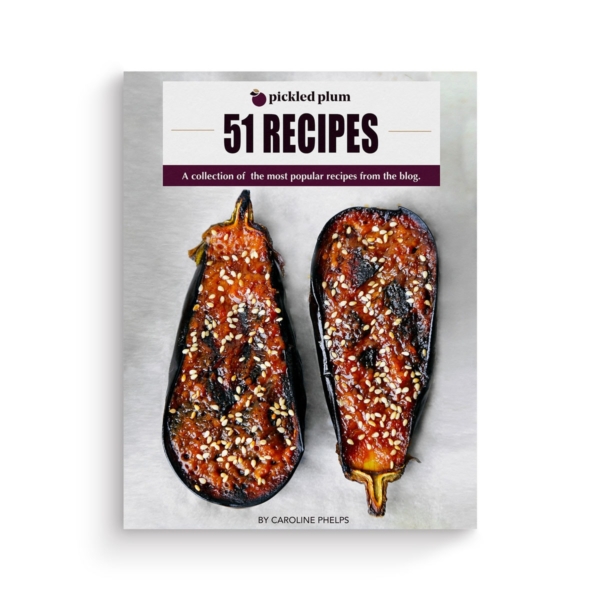
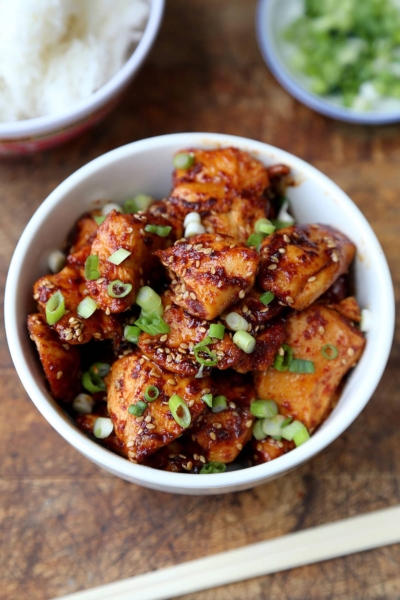
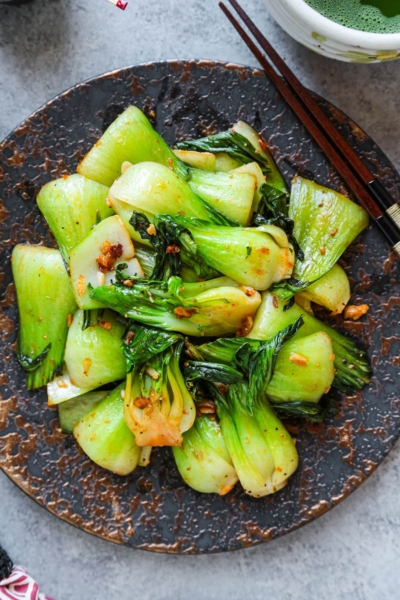
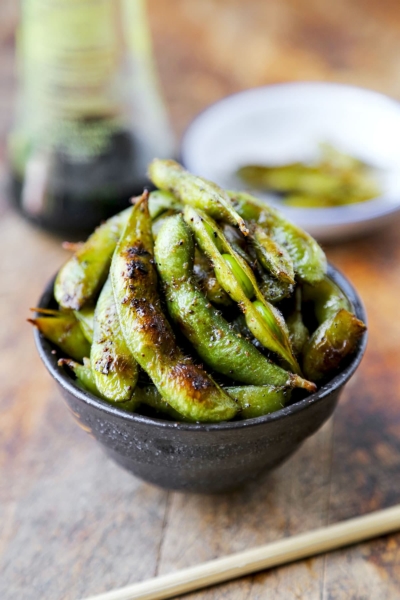
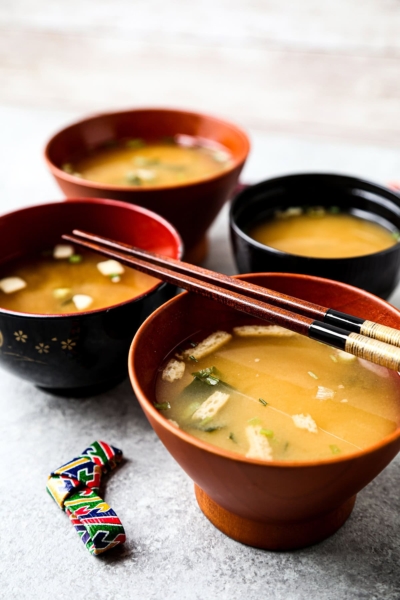
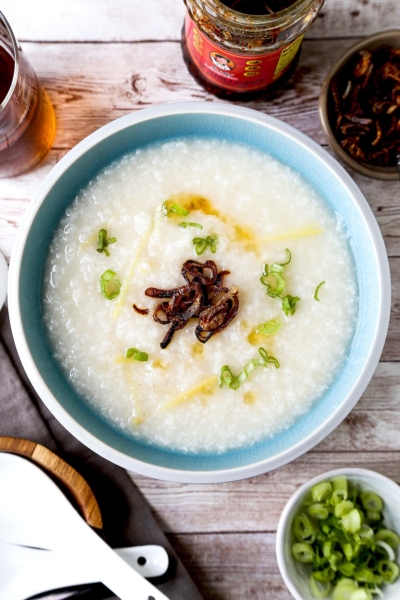









Are you able to freeze the dough? So you can thaw and form later?
Hi E! Yes, the dough should be okay to be frozen and used later 🙂
If you don’t have a steamer is there another way to cook these?
Hi Perri, yes you can! Here’s a post that gives many different options to steam 🙂 https://food52.com/blog/8312-how-to-hack-a-steamer